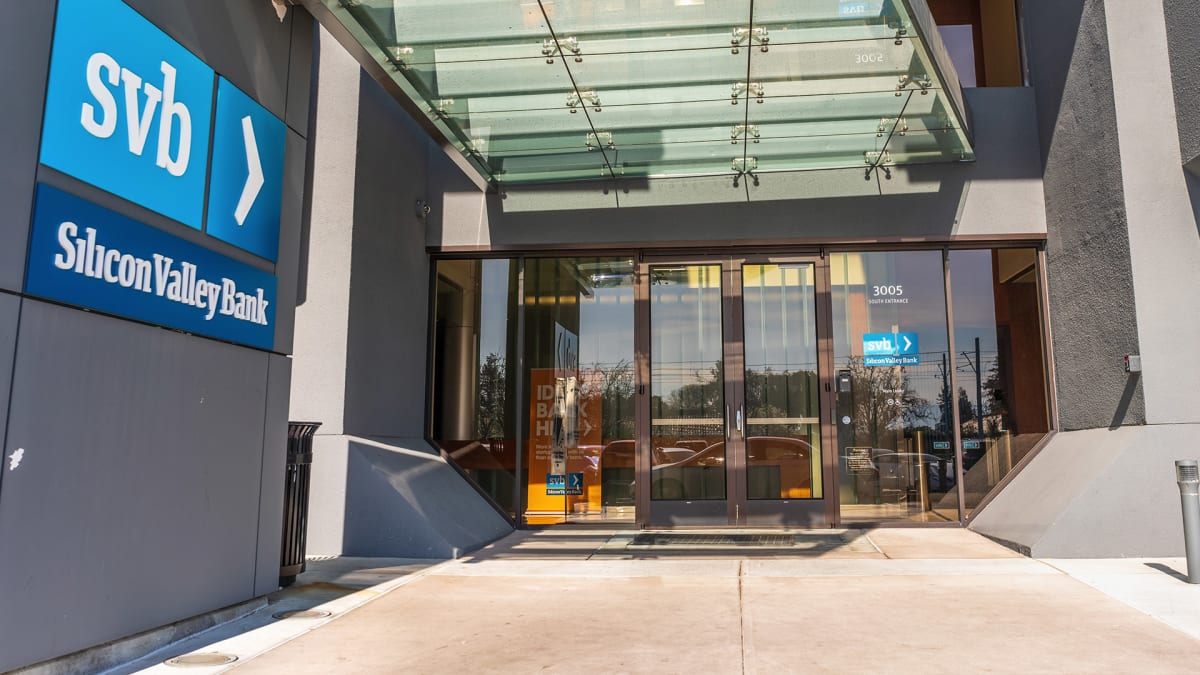
It's a black week for the American financial system: In just 48 hours, the banking sector has been shaken by the collapse of two major banks.
Most worrying is that these banks served two so-called growth economic sectors: the tech sector and the cryptocurrency industry.
SVB Financial Group, (SIVB) the lender to Silicon Valley startups, failed on March 10, falling into the hands of the FDIC. The federal agency has taken control of the banking company, reviving the ghosts of the 2008 financial crisis.
"Silicon Valley Bank, Santa Clara, California, was closed today by the California Department of Financial Protection and Innovation, which appointed the Federal Deposit Insurance Corporation as receiver," the federal agency said in a news release.
"All insured depositors will have full access to their insured deposits no later than Monday morning, March 13, 2023. The FDIC will pay uninsured depositors an advance dividend within the next week. Uninsured depositors will receive a receivership certificate for the remaining amount of their uninsured funds."
It added that it may pay a dividend to uninsured depositors as it sells the assets of SVB (SIVB).
The FDIC is a guarantor for bank depositors.
SVB: The To-Go Bank for Tech Startups
At the end of last year SVB had $209 billion in total assets and $175 billion in total deposits. SVB becomes the second biggest failure of a U.S. bank after Washington Mutual in 2008.
SVB was a central player in the innovation economy. It was the backbone of the tech industry in Silicon Valley. It played an important role in the startup ecosystem by providing specialized financial services, industry expertise, a valuable network, and a strong reputation.
It also offered a range of financial services tailored specifically to the needs of startups, such as venture debt, corporate banking, and asset management. These services are designed to help startups manage their finances, optimize their cash flow, and scale their businesses.
SVB suffered from the rise in interest rates from the Federal Reserve because it hurt the value of its investment assets, especially bonds. As a result, the bank had to resort to a capital raise as many startups withdrew their deposits from the bank since they were burning a lot of cash.
SVB had to sell bonds, primarily U.S. Treasury securities, at a discount to cover these withdrawals. The rise in interest rates has made existing bonds less valuable. In selling these bond positions, SVB had to take a significant loss.
But its attempt to raise $2.25 billion failed.
Crypto Bank Silvergate Collapsed
Two days earlier, Silvergate, the crypto bank, collapsed. The bank was where most of the big crypto firms went, because traditional banks did not want to do business with them. And that reluctance stemmed from warnings from regulators who consider the crypto industry a risky sector.
The company said on March 8 that it intended "to wind down operations and voluntarily liquidate the bank in an orderly manner and in accordance with applicable regulatory processes."
It added: "In light of recent industry and regulatory developments, Silvergate believes that an orderly wind down of bank operations and a voluntary liquidation of the bank is the best path forward."
"The bank’s wind down and liquidation plan includes full repayment of all deposits. The Company is also considering how best to resolve claims and preserve the residual value of its assets, including its proprietary technology and tax assets."
Verging on Bigger Fall Than 2008: Economist Schiff
The rout of the La Jolla, Calif., bank was due to pressure from regulators, in particular the Department of Justice, which has opened an investigation into its business relations with the empire of the former crypto king Sam Bankman-Fried.
Bankman-Fried has been charged with 12 counts of fraud, stemming from the collapse of his crypto empire, the cryptocurrency exchange FTX and its sister company, Alameda Research.
Silvergate was established in 1988. The bank initially specialized in lending to industrial customers and at the time also offered loans for both residential and commercial real estate.
But in 2013, the bank began to court crypto firms, when traditional banks were reluctant to do so due to the opacity prevailing in the sector. Silvergate thus became the crypto bank.
In 2019, the firm made its initial public offering, promising a complete refocus on the industry, which was then experiencing a renaissance. As of Sept. 30, Silvergate had $11.9 billion in digital assets held as deposits.
But the bankruptcy of FTX and Alameda on Nov. 11 scared away customers. The bank thus reported only $3.8 billion in digital assets held as deposits as of Dec. 31. FTX was one of Silvergate's big customers.
The question now is whether other U.S. banks will fall? Could SVB and Silvergate's issues spread to other regional banks especially since suspicion can lead customers to rush to these banks to withdraw their money?
"The U.S. banking system is on the verge of a much bigger collapse than 2008," said economist Peter Schiff, known for his dire predictions.
"Banks own long-term paper at extremely low interest rates. They can't compete with short-term Treasuries. Mass withdrawals from depositors seeking higher yields will result in a wave of bank failures."







